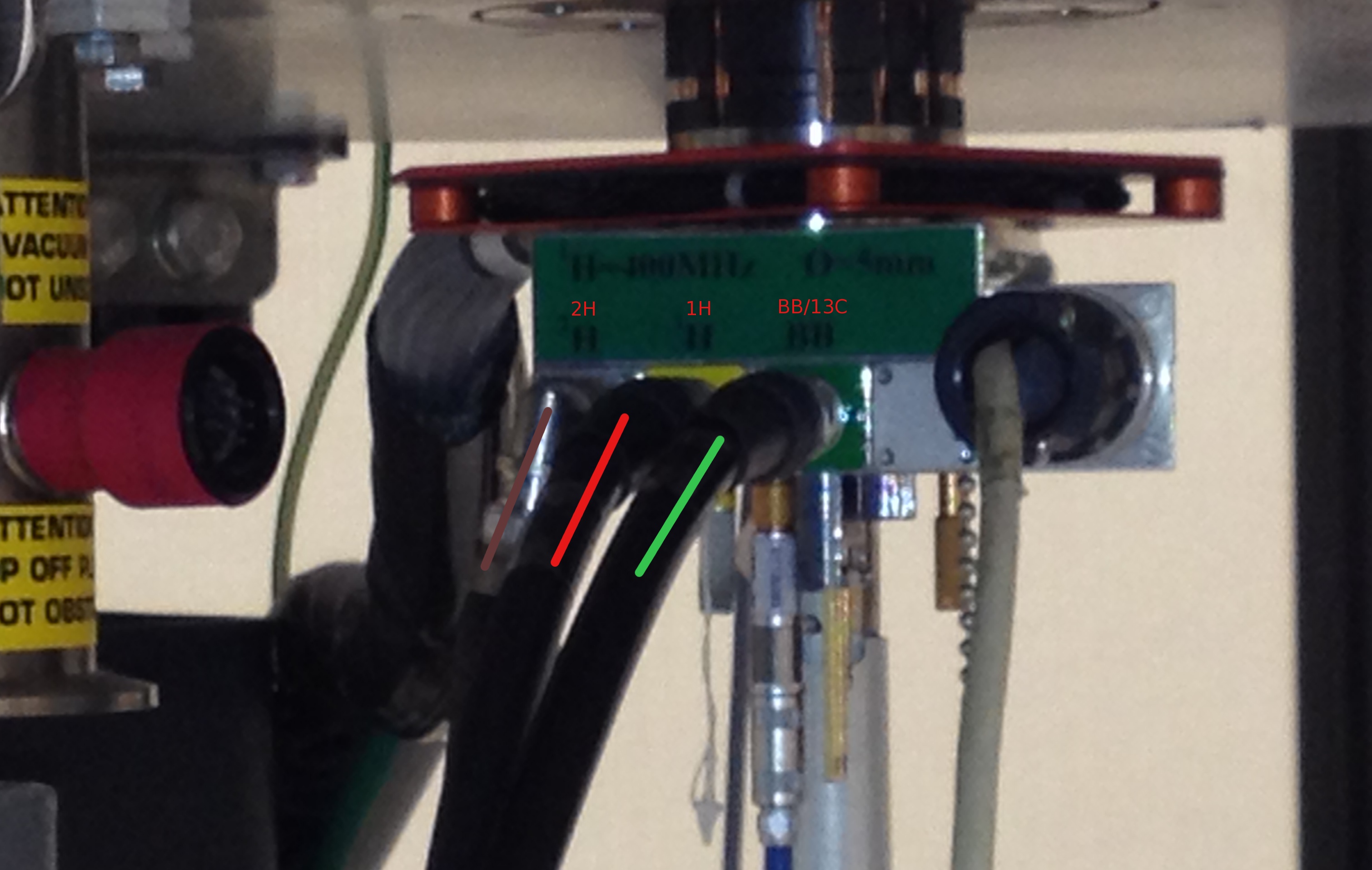There are 2 ways to run the Deuterium NMR expt: 1) is the quick way which requires no additional tuning, but does need recabling.
2) need to tune on the BB/13C, but do not need to recable. here the S/N is considerably better >100 times.
Recall that the BBO NMR probe has 3 channels: 2H, 1H and BB/13C. the BB (Green) stands for broadband, which spans a large number of
nuclei accessible thru tuning using the digital sliders. 2H (Brown) is designated for locking on your deuterated solvent and is always tuned to 2H.
1H (Red) is used for 19F as well. The connectors to the probe are called 'BNC' connectors.

- 1st be sure you have locked on a known solvent before proceeding!
- eg) with a 1H expt open lock on the standard sample (cdcl3)
- if not your peaks may not be referenced correctly and show at the wrong position.
- on the BSMS/Shim board we need to turn the lock off
- turn 'lock' off green diode unlit
- turn 'sweep' off green diode unlit
- set 'lock power' to -60 using the wheel, like shimming...
-
- now we need to disconnect cables by gently twisting to disengange the BNC connector and then pull
- remove brown/2H cable from probe and leave on ground
- remove green/BB cable from probe and connect to 2H spot that was just removed
- rpar h2.bbo all - read in the parameter file for deuterium expt and run as normal..
- rga - sets the receiver gain (rg) which depends on the sample concentration (wait)
- zg - zero memory buffer and go
Data Processing, see Chp 11 of Topspin 1.3 manual (page 143)
- efp - exponential line broadening, Fourier transform and phase (with current params in 'edp')
- 1st be sure you have locked on a known solvent before proceeding!
- eg) with a 1H expt open lock on the standard sample (cdcl3)
- if not your peaks may not be referenced correctly and show at the wrong position.
- again, on the BSMS/Shim board we need to turn the lock off
- turn 'lock' off green diode unlit
- turn 'sweep' off green diode unlit
- set 'lock power' to -60 using the wheel, like shimming...
-
- NO RECABLING NEEDED HERE. We run the expt much like the 13C 1D
- however, still remove brown/2H cable from probe and leave on ground
- rpar h2.bbo all - read in the parameter file for deuterium expt and run as normal..
- now we need to tune to 2H using the sliders
- wobb - tune like its a 13C experiment using the sliders to 2H setting
- rga - sets the receiver gain (rg) which depends on the sample concentration (wait)
- zg - zero memory buffer and go
- 2H is a quadrupole nucleus with a spin=1. it is very different than 1H in this nature (ie broader lines)
- It does however have a very similar chemical shift range given the number of surrounding electrons has not changed
2H_chem.shifts
